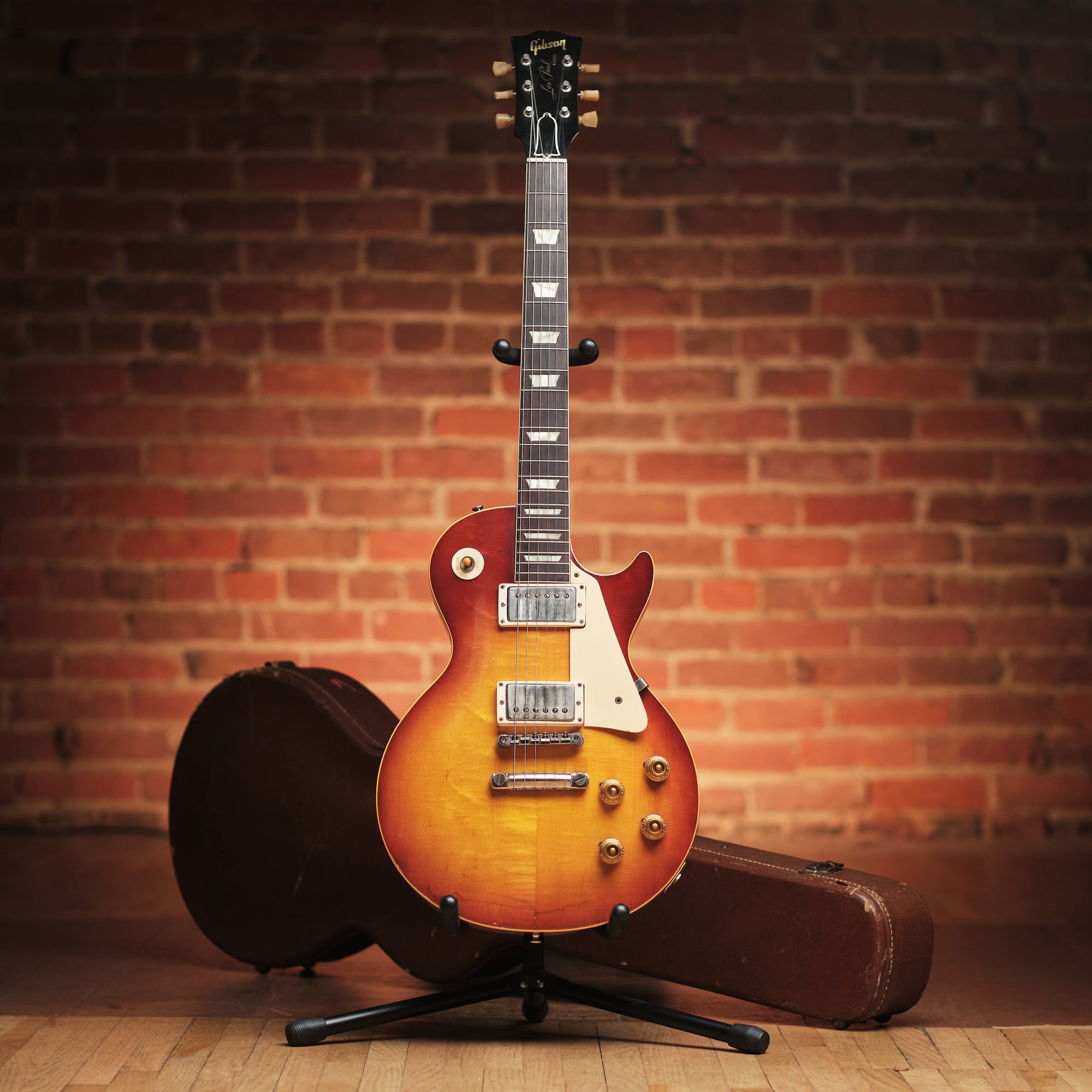1961 Kay Jazz Special Bass & 1965 Fender Bassman with VT 15 Cab

Among the collection of instruments made iconic by the great Sir Paul McCartney, the Kay Jazz Special Bass may well be the most criminally underrated.
Completely unknown to many, Paul’s Jazz Special came into heavy rotation during his years with Wings. Their album “Red Rose Speedway” featured the instrument extensively, and it even graced the cover of their 1973 single “Jet.” While just a few hundred were ever made during Kay’s brief run of Jazz Specials from 1960-1962, the model found its way onto some of the era’s most legendary records.
Kay’s unique “Jimmy Reed” style blade pickup in the neck position somehow manages to deliver shocking versatility while remaining immediately recognizable. (Define shocking versatility, you ask? The same bass was used on Stevie Wonder’s “Ebony and Ivory” as was used for the Surfari’s hit “Wipeout.”) The massive “Kelvinator” headstock is as elegant as it is ostentatious. We were lucky to find this particular example hidden away in a storage unit not far from our Los Angeles showroom, original and totally uncirculated. Who know’s what kind of sessions this one has seen? Pictured here with a 1965 Fender Bassman Amp with 1969 Bassman cabinet.
1963 Gibson Les Paul SG & 1950s Gibson GA-40

I’ve always considered Gibson’s SG body type to be an affectionate homage to the Fender Telecaster. Like siblings separated at birth and raised on either side of the Berlin Wall, the aesthetically disparate models share a common soul.
Unburdened by the complexities of carved tops, chambered bodies, or excess circuitry, the objective excellence of the instruments can fall quickly into focus. In the case of this particular Les Paul, it is immediately clear that the magic of golden-era Gibsons is far from myth. The pair of early patent number humbuckers sound every bit as good as any PAFs ever made, regardless of what you might read on the guitar forums.
The sideways Vibrola may not be the most functional design ever conceived, but it could well be the sharpest looking tailpiece out there. If anything, the nickel-plated assemblage of gears and springs serves as a tangible reminder that what you’re holding is a tool; a machine that was built for a purpose entirely unconcerned with vanity or status. It’s everything that you need to make music and nothing that you don’t. It’s a pair of Levi 501s in a world full of cargo shorts. It’s pictured here with a 50’s Gibson GA-40 amp.
1966 Fender Mustang & 1961 Fender Princeton

A sad reality for the majority of us: the days of affordable custom color Strats and Teles are long, long gone. Most of us lack the swimming pool full of money and shiny top hat required to afford such a thing.
The good news is, though, there are still deals to be had if you are willing to step slightly off the beaten path. This 1966 Mustang in Daphne Blue, for example. A slightly shorter 24” scale will throw off the purists, yet still feel comfortable and familiar enough in the left hand. Flat pole Strat-style pickups will get you the classic Fender chime with a slightly different aesthetic. Add a surprisingly well-designed (some say Fender’s best ever) vibrato tailpiece, and you have an extremely viable 60s Fender guitar for under $4,000.
In recent years these Mustangs have come a long way in shrugging off the stigma of being “student” guitars, although prices are still relatively low. I wouldn’t be surprised to see the model enjoy a meteoric rise in popularity in the coming years, much like Fender’s offsets have over the course of the last decade. Come to think of it, it wasn’t too long ago you could score a ’59 Jazzmaster for around this price. Pictured with a 1961 Fender Princeton Amp.
1960 Fender Jazzmaster & 1975 Fender Princeton

The astronomical increase in popularity of pre-CBS Jazzmasters over the last several years is difficult to explain, but becomes eminently clear once you’re lucky enough to get your hands on one.
Long considered the lanky goofball cousin of the Strat and Tele, the last decade has seen it become one of Fender’s most sought after models. The highest-end offering in Fender’s catalog at the time, it’s aim was to convert jazz guitar players away from Gibson with a feature-laden solid body alternative. In this respect, the model was a complete failure. The features meant to interest jazz players were largely found useless, and the Jazzmaster struggled to gain traction amongst its namesake genre.
What nobody knew at that time (not even Leo) was that the model would find its niche in the alternative/indie rock scene of the 80s and 90s. Guitarists like J Mascis and Thurston Moore would expose an entirely new generation to the Jazzmaster, and broaden the accepted methods and genres in which the model could be used. Ironically, Fender’s most genre-specific model has grown to be one of the most versatile and malleable solid body electric guitar designs of all time. This particular example is a completely original slab board model, and is widely considered the quintessential form of the Jazzmaster. Pictured with a 1975 Fender Princeton Amp.
1968 Martin D-28 “Sonny J”

If you don’t know who Sonny James is, then you probably weren’t dating a teenager in 1957. Along with the provenance of one of the era’s most popular crooners, this instrument has an incredible story to go along with it.
Bought new by Sonny James in 1968 and immediately adorned with his name, this guitar saw its first (and last) commercial airline flight just weeks after its purchase. As unbelievable as this may sound, the TWA baggage handler on duty that day didn’t have the gentlest touch, and the brand new D-28 ended up with a trio of top cracks near its lower bout. After some deliberation, TWA agreed to pay Sonny enough cash to buy a brand new D-28, and sent him on his way.
This left the airline with a guitar in need of repair. In a lucky twist of fate, another one of the company’s young baggage handlers happened to be an aspiring luthier, and managed to purchase the now-damaged guitar from TWA. This employee executed some decent repairs for the time, then played and enjoyed the guitar up until last year, when we purchased the guitar directly from him. As structuraly solid as the repairs were, they weren’t quite up to our standards, so we carefully removed and repeated the repairs with period-correct materials and glues.
This D-28 is a rare example that features a small rosewood bridge plate, a brief transitional feature of the time that is highly preferred to the later, large plate. An absolutely beautiful Brazilian Rosewood back and sides make this one of the last of the truly coveted Martin D-28s, and its unlikely life of heartbreak and redemption make it an unforgettable piece of musical history.



